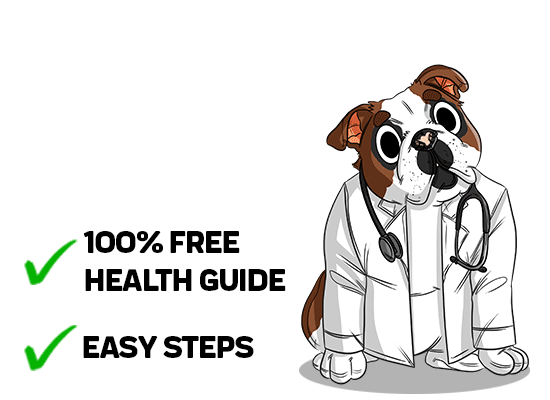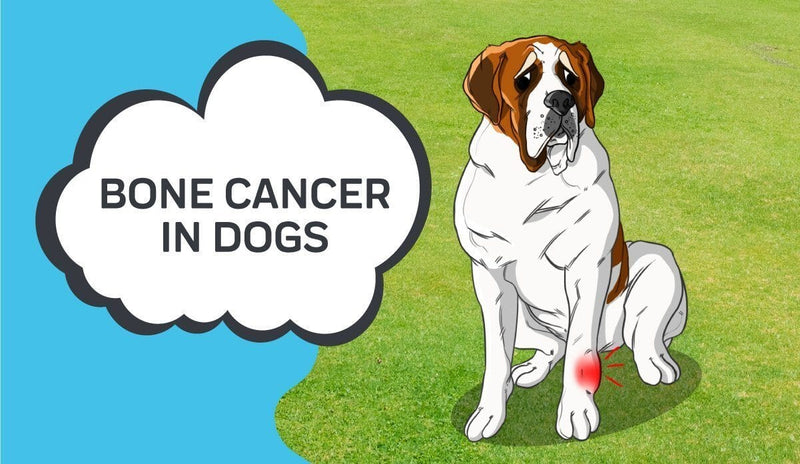- What are the symptoms of hemangiosarcoma in dogs?
- How Is Hemangiosarcoma Diagnosed
- Do dogs suffer when they have hemangiosarcoma?
- How to Treat Hemangiosarcoma
- How Long Do Dogs with Canine Hemangiosarcoma Live?
Many types of cancer pose a threat to the health of dogs everywhere, and hemangiosarcoma is one of them. As a deadly form of canine cancer, Canine hemangiosarcoma often starts in one part of the body and makes its way to other parts rather quickly. This is known as metastasizing. All forms of malignant cancer, including hemangiosarcoma, are known for moving from the origin to other areas.
As a blood vessel cancer, hemangiosarcoma cancer cells grow from the cells that line the blood vessels of canines. These cells are known as endothelial cells. From there, these cells of hemangiosarcoma often start to make their way into the surrounding organs, most notably the heart and lungs of dogs.
Canine hemangiosarcoma originates in the tissue of organs in your dog’s body, hence the reason it is known as a blood vessel cancer. However, dogs' hemangiosarcoma doesn’t usually come to life in just any organ. Most often, a dog with hemangiosarcoma will have a more specific form of the cancer. This is known as splenic hemangiosarcoma. If a dog has splenic hemangiosarcoma, it means the cancerous blood vessels are located in the tissue of your dog’s spleen.
Before dogs can receive a diagnosis clearly stating that they have hemangiosarcoma of an organ in general, they must present with symptoms of hemangiosarcoma. So, what are the symptoms of hemangiosarcoma in dogs?
What are the symptoms of hemangiosarcoma in dogs?
Pet owners cannot predict the future, so it’s not possible to know that your dog has hemangiosarcoma the moment the cells start multiplying. However, when you know what the clinical signs of hemangiosarcoma in dogs are, you have a better chance of successfully detecting it. The earlier, the better. However, some pet owners don’t know what to look for.
Hemangiosarcoma is diagnosed in many breeds of dog, but golden retrievers, German shepherds and Labrador retrievers have higher chances than most. Dogs diagnosed with hemangiosarcoma inside their bodies might experience symptoms such as weakness or lethargy depending on the location of tumor growth: either around blood vessels near the heart (occasionally seen) or within the abdomen (common). Cutaneous hemangiosarcoma are more commonly found amongst light-skinned dogs who tend to get a lot of sun exposure - they can be anywhere from skin tags that grow larger over time all way up to large masses under your pup's skin.
These include things like:

- Swollen stomach
- Hard time breathing
- Asthma-like symptoms
- Dry cough and mucous
- The occasional nosebleed
- Extreme exhaustion
- Constantly tired
- More naps than usual
- Little to no desire to play
- No interest in walks
- Pale mucous membranes in the eyes
- Pale mucous membranes in the mouth
- Very weak and slow-moving
- Depressive symptoms
- Anxious and stressed out
- Hiding away from company
- Preferring to be alone
- Adverse to being pet by loved ones
How Is Hemangiosarcoma Diagnosed
Dogs diagnosed with hemangiosarcoma show symptoms in similar ways, but not all signs have to be present for a diagnosis. Some pet owners bring their pets to the veterinarian with concerns of weakness, only to find out that a tumor has ruptured inside and requires urgent surgery. Before this dangerous procedure can take place, veterinarians must ensure that anesthesia will not be unsafe for your animal companion by performing blood tests before testing them on X-rays or ultrasound machines; these scans are necessary because they tell us if there are any signs of metastasis which could endanger future surgeries. Dogs without visible evidence may still benefit from cancer removal during surgery procedures so it's important you consult an experienced vet who knows what he/she is doing!

- An abdominal ultrasound
- Blood biochemistry panel exams
- A CBC, or a complete blood count test
- X-rays of the chest or abdominal region
- CT scans of the concerning organs
- An echocardiogram exam
- A full-body physical examination
- A urinalysis exam
Do dogs suffer when they have hemangiosarcoma?
Much like humans, dogs with hemangiosarcoma suffer when they have hemangiosarcoma. They typically experience nausea and vomiting as well as a general feeling of being unwell. Canines also lose their appetite which leads to weight loss while the tumor quickly enlarges in size until it eventually blocks organ function or blood flow because of its large mass on top of these vital organs is detrimental for survival rates due to this obstruction over time.
How to Treat Hemangiosarcoma
Since cases of hemangiosarcoma are not often caught until dogs are in the late stages of blood vessel cancer, treatment options are more limited than they might be for cancer that can be detected very early on. The main goal is first to discuss whether or not it's possible to shrink the size of the tumor. This is especially helpful for hemangiosarcoma cancer tumors that have grown to be quite massive in size.
Once specialists have shrunk the tumor, the next plan of action is to start chemotherapy treatment for dogs with hemangiosarcoma. During chemotherapy appointments for dogs, the vet specialists seek to destroy any cancer cells in your dog's body. By introducing a consistent and frequent dose of chemotherapy medications to your dog, the cancer cells will start to die off and decrease in quantity over time.
Sometimes, chemotherapy alone is not enough, so your dog's vet might suggest that your pet undergo surgery to remove the hemangiosarcoma tumor. If surgery alone is required, your dog will be placed under general anesthesia to slowly lull them to sleep so that the veterinarians can operate for your dog entirely pain-free.

Chemotherapy is often followed by radiation therapy appointments to ensure that the cancer cells don’t reappear. During radiation, your dog is exposed to radiation as a form of therapy. Another way of describing light or energy, radiation zeros in on the cells in your dog's body and destroys them on a DNA-level, meaning they are no longer able to divide rapidly.
Radiation is designed in a way that minimizes the destruction of healthy cells while increasing the number of cancerous cell deaths. Very few healthy cells of your dog's body are killed in the process of getting rid of any remaining cancer cells. Thanks to the body's way of bouncing back quickly and healing itself, should your dog experience any damage as a result of radiation, your dog's healthy and non-cancerous cells will work to restore the damaged places.
How Long Do Dogs with Canine Hemangiosarcoma Live?
A very common question that pet owners ask is, "How long do dogs with hemangiosarcoma live?" The median survival time of most dogs following a hemangiosarcoma cancer diagnosis is anywhere between three and six months. Still, before your heart stops upon reading this information, every dog is different. The three-to-six-month median survival time applies to canines with late-stage diagnoses.
While this median survival time is incredibly short, some dogs will live anywhere around two, three, or four years after being treated for hemangiosarcoma. Sometimes, dogs will stay in remission for even longer. They can go on to live as though they never suffered from cancer at all enjoying a high quality of life. As we can see from these data points, the median survival times of dogs with hemangiosarcoma can vary drastically, and it all comes down to the precise details of a dog’s condition.
As always, if you are curious to learn more about your dog’s situation, in particular, reach out to the veterinarian that your dog sees regularly. The vet will have a better way of answering your specific questions as they pertain to your dog. That way, instead of reading statistics that might scare you and send you into a panic, the vet can advise you on what you can expect as the owner of your dog with hemangiosarcoma.
Always remember that you are not alone in handling a diagnosis of hemangiosarcoma. There are communities out there that can support you, as well as your dog, as the two of you experience hemangiosarcoma. Reach out for support if you feel that it would help you and the quality of life of your pup! People are ready and willing to give you a shoulder to lean on during these trying times.
Sources:
Can We Find a Cure for Canine Hemangiosarcoma?Hemangiosarcoma in a Dog
Hemangiosarcoma
Hemangiosarcoma
Canine Hemangiosarcoma
Canine Splenic Hemangiosarcoma
Blood Vessels and Endothelial Cells
Canine Hemangiosarcoma
Chemotherapy for Dogs
Radiation therapy
Approved by:
Dr. Ivana Vukasinovic
Doctor of Veterinary Medicine, University of Belgrade
 Ivana Vukasinovic grew up in Serbia and attended the University of Belgrade where she received a degree in Veterinary medicine in 2012 and later completed surgical residency working mostly with livestock. Her first year of practice was split between busy small animal practice and emergency clinic, and after two more years of treating many different species of animals, she opened her own veterinary pharmacy where an interest in canine and feline nutrition emerged with an accent on fighting animal obesity. In her free time, she acts as a foster parent for stray animals before their adoption, likes to read SF books and making salted caramel cookies.
Ivana Vukasinovic grew up in Serbia and attended the University of Belgrade where she received a degree in Veterinary medicine in 2012 and later completed surgical residency working mostly with livestock. Her first year of practice was split between busy small animal practice and emergency clinic, and after two more years of treating many different species of animals, she opened her own veterinary pharmacy where an interest in canine and feline nutrition emerged with an accent on fighting animal obesity. In her free time, she acts as a foster parent for stray animals before their adoption, likes to read SF books and making salted caramel cookies.
Thanks for stopping by!
P.S. We Love You!
Sincerely,
The Innovet Team
Please do not ask for emergency or specific medical questions about your pets in the comments. Innovet Pet Products is unable to provide you with specific medical advice or counseling. A detailed physical exam, patient history, and an established veterinarian are required to provide specific medical advice. If you are worried that your pet requires emergency attention or if you have specific medical questions related to your pet’s current or chronic health conditions, please contact or visit your local/preferred veterinarian, an animal-specific poison control hotline, or your local emergency veterinary care center.
Please share your experiences and stories, your opinions and feedback about this blog, or what you've learned that you'd like to share with others.
LEARN MORE
Best Selling














 CBD Oil for Dogs
CBD Oil for Dogs Advanced Mobility Support Chews for Dogs
Advanced Mobility Support Chews for Dogs All Natural Oatmeal & Honey Shampoo + Conditioner for Dogs
All Natural Oatmeal & Honey Shampoo + Conditioner for Dogs CBD Dog Treats
CBD Dog Treats




